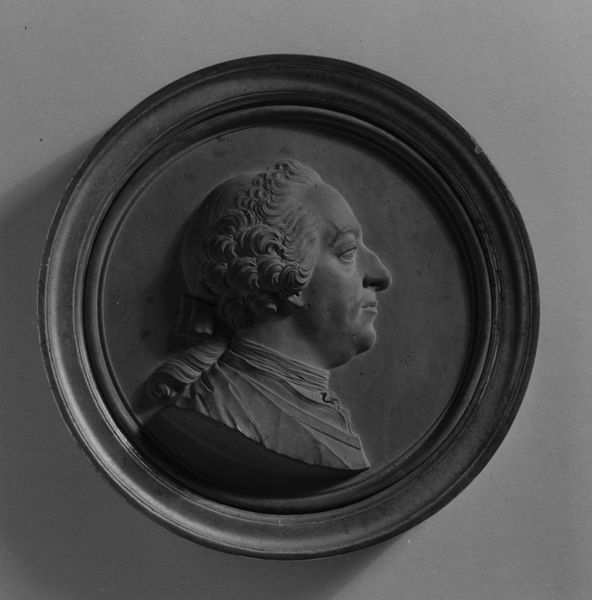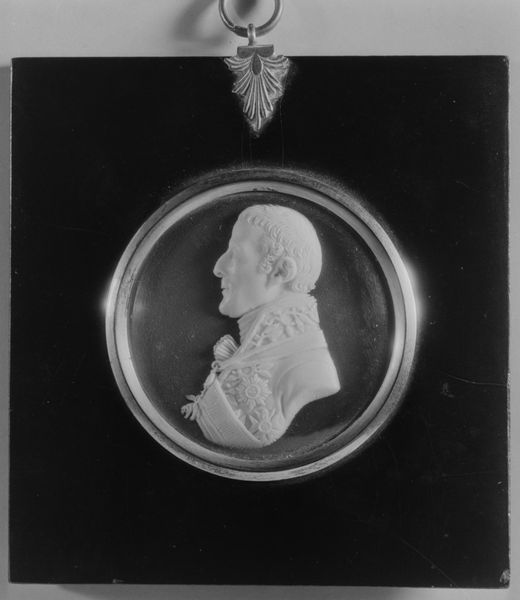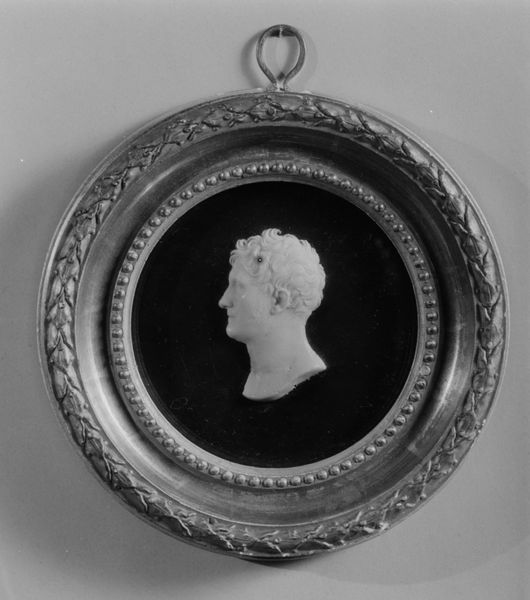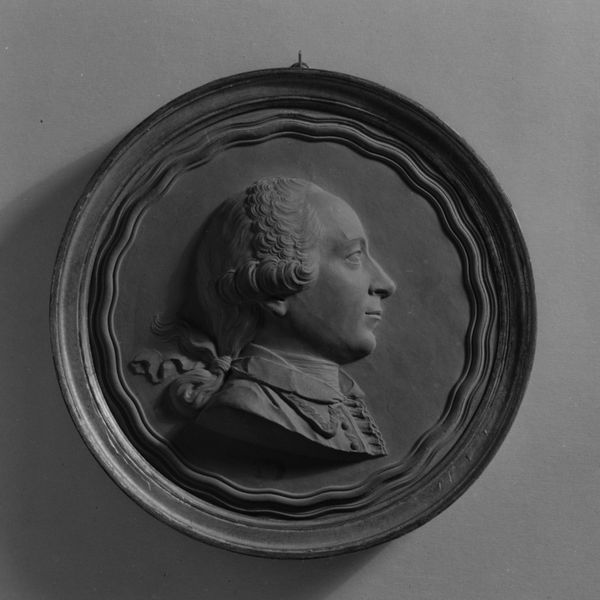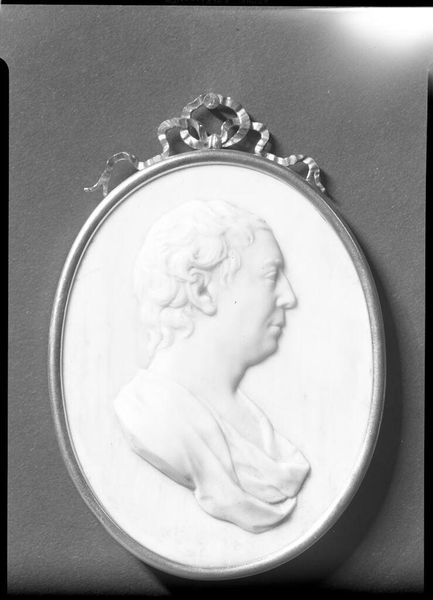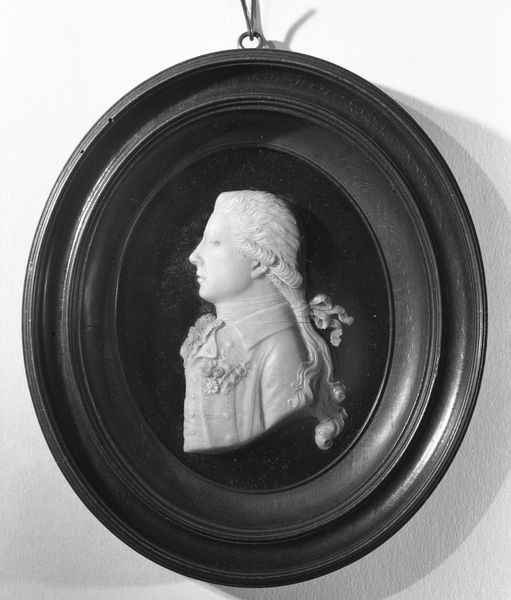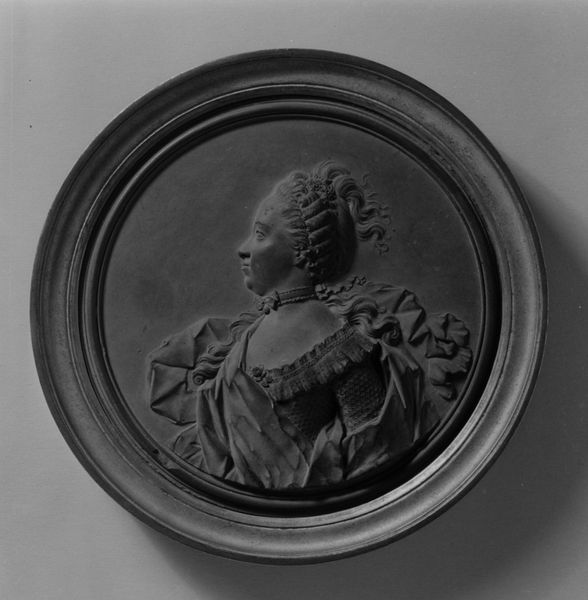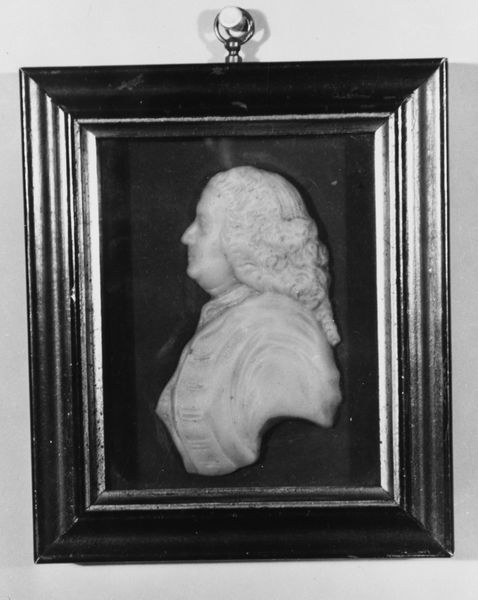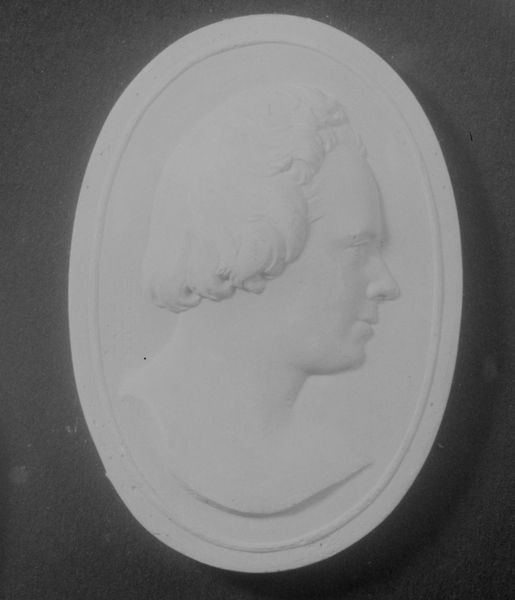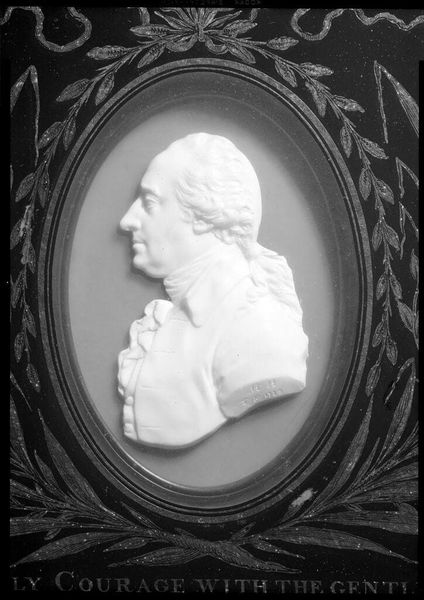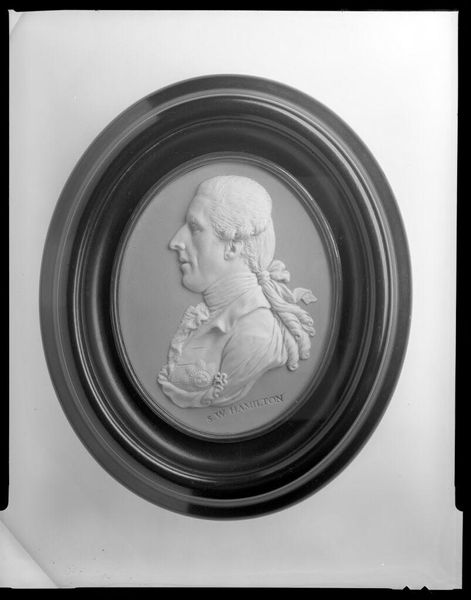
sculpture
#
portrait
#
neoclacissism
#
sculpture
#
sculpture
#
decorative-art
#
profile
Dimensions: Diameter (framed): 2 15/16 in. (7.5 cm)
Copyright: Public Domain
Curator: At the Metropolitan Museum of Art we have a striking sculptural profile, crafted sometime between 1800 and 1850. Editor: It’s quite austere, isn't it? The severe profile against that stark black background... a kind of classical formality in miniature. Curator: Precisely. The piece reflects Neoclassical sensibilities with its clean lines and focus on the portrait, an approach favored by Marie Honoré Renaud, the artist. Its composition offers a portrait meant to last through centuries, as they often did, worn on pendants or brooches. Editor: And that profile… such deliberate reduction. The stark white form set against black allows one to focus on shape. The line of the nose, the curl of the wig, are clearly defined. How do you think its intended audience might have perceived that economy of detail? Curator: I think that simplification communicated virtue and intellect, aligning with Enlightenment ideals. The sharp silhouette recalls classical cameos—an echo of republican Rome intended to evoke notions of high morals. These symbolic connotations added prestige to the portrait's sitter, but also underscored the values they would have hoped to be remembered for. Editor: Interesting. The cold precision almost negates emotional accessibility for modern viewers. It becomes an abstract symbol *of* power, perhaps, rather than simply representing the man himself. And, being worn on the body as decoration, would that make the wearer someone of political persuasion, or a status symbol, perhaps? Curator: Quite possibly both! By having his likeness made and displayed, the wearer participates in its visual vocabulary, whether intentionally or not. A fascinating dialogue between visibility, meaning, and power, don't you think? Editor: Indeed. Looking again, that formal precision almost becomes... expressive, in its own way. Almost hinting at an identity that defies its own time. Curator: Absolutely, each element opens further windows for analysis. Thank you.
Comments
No comments
Be the first to comment and join the conversation on the ultimate creative platform.

